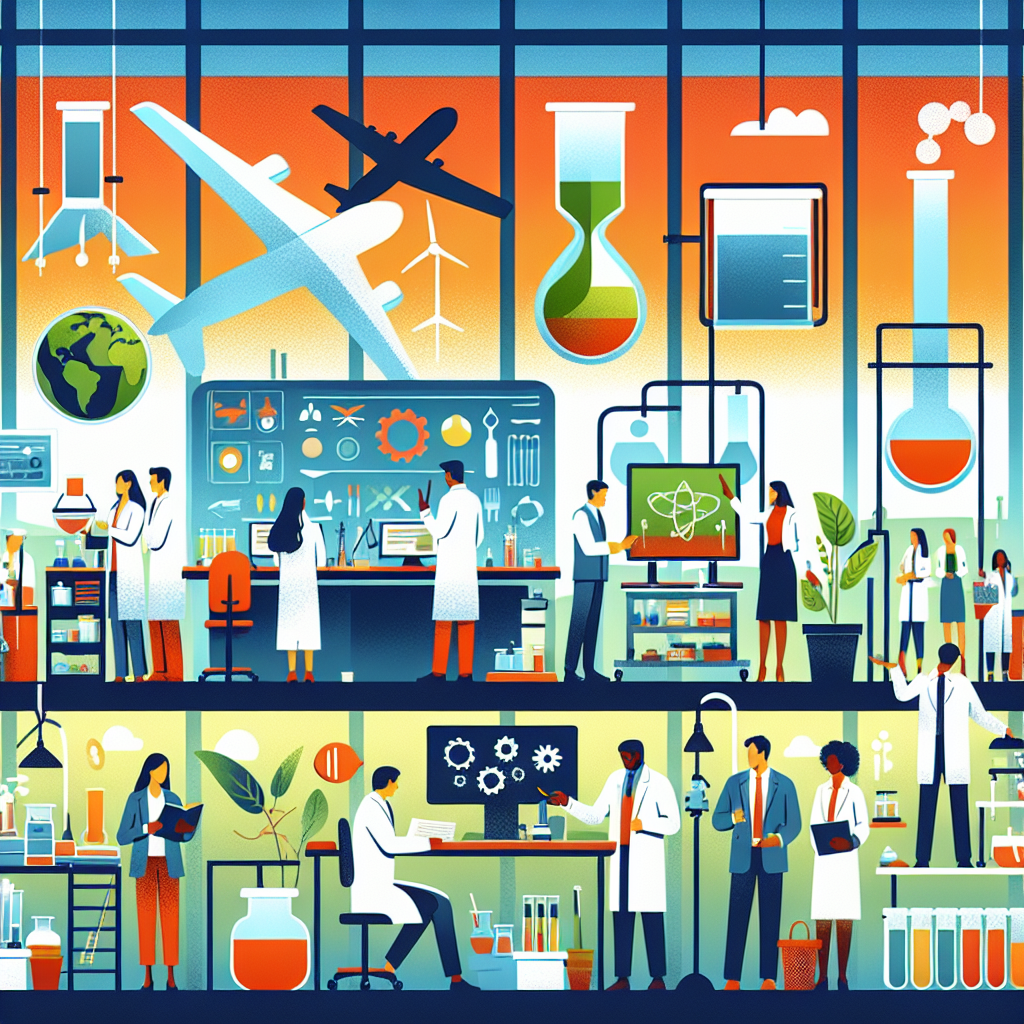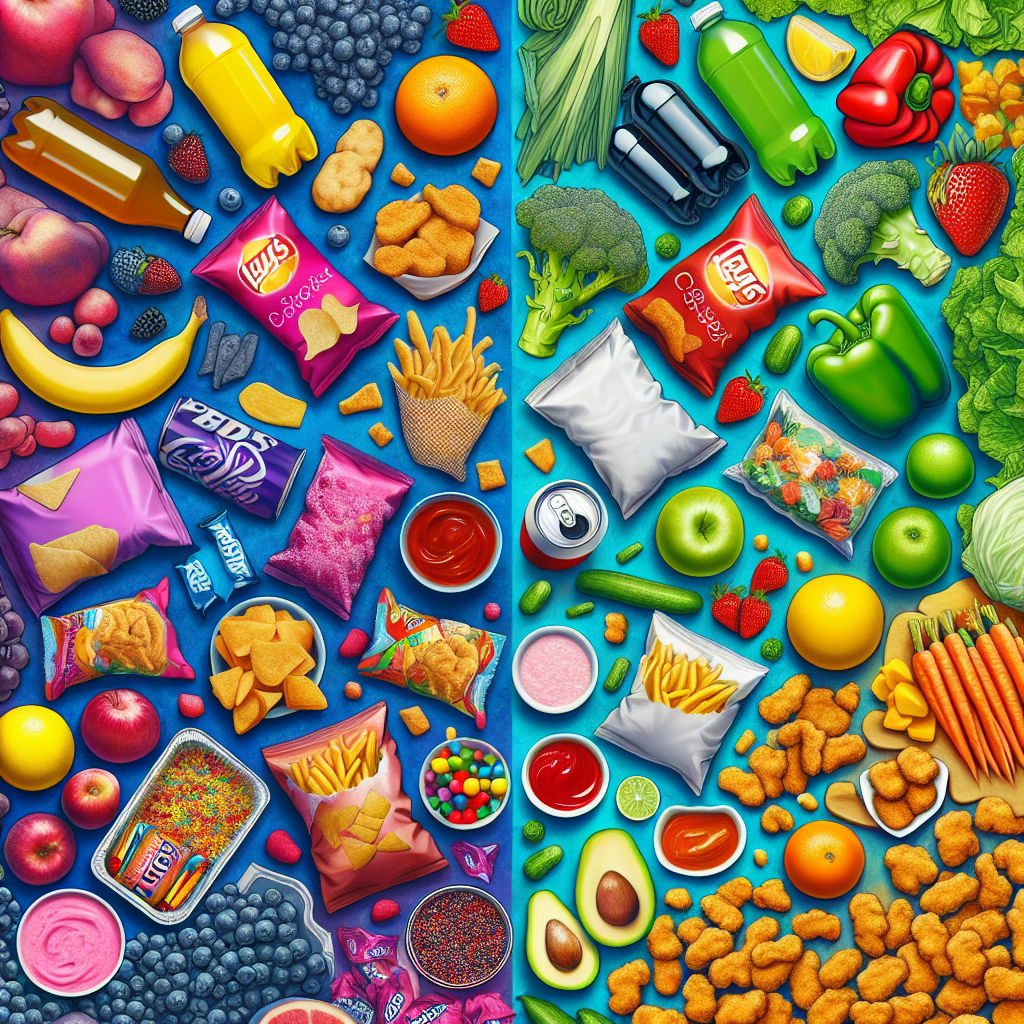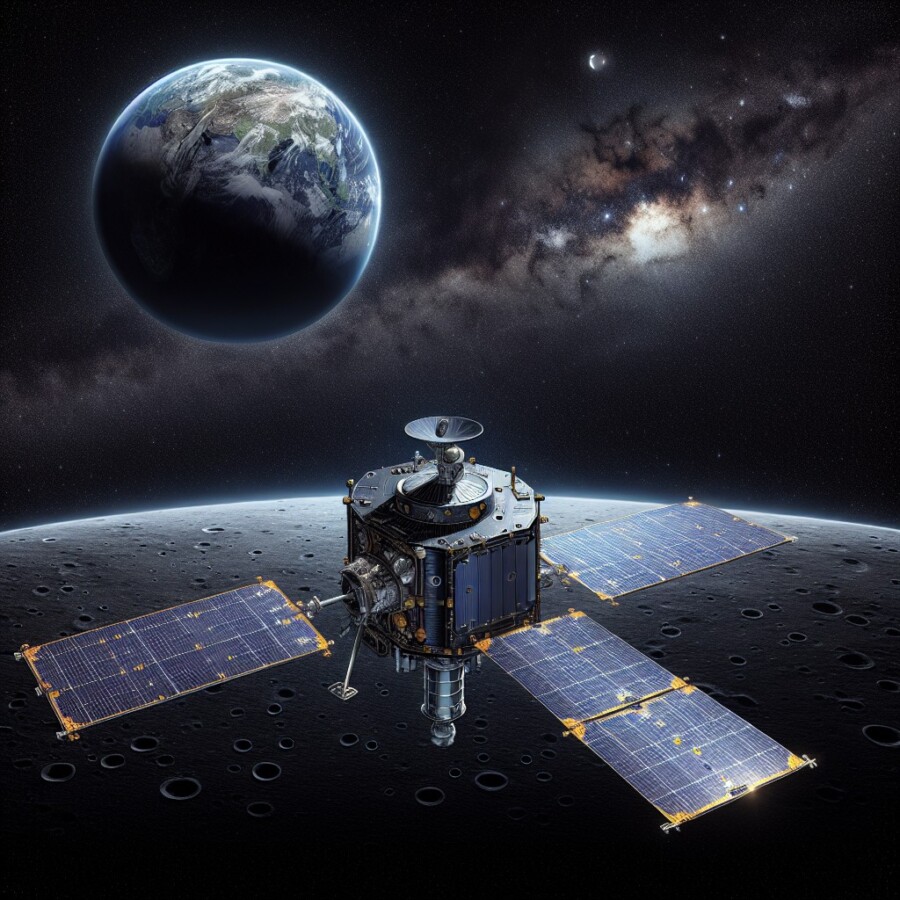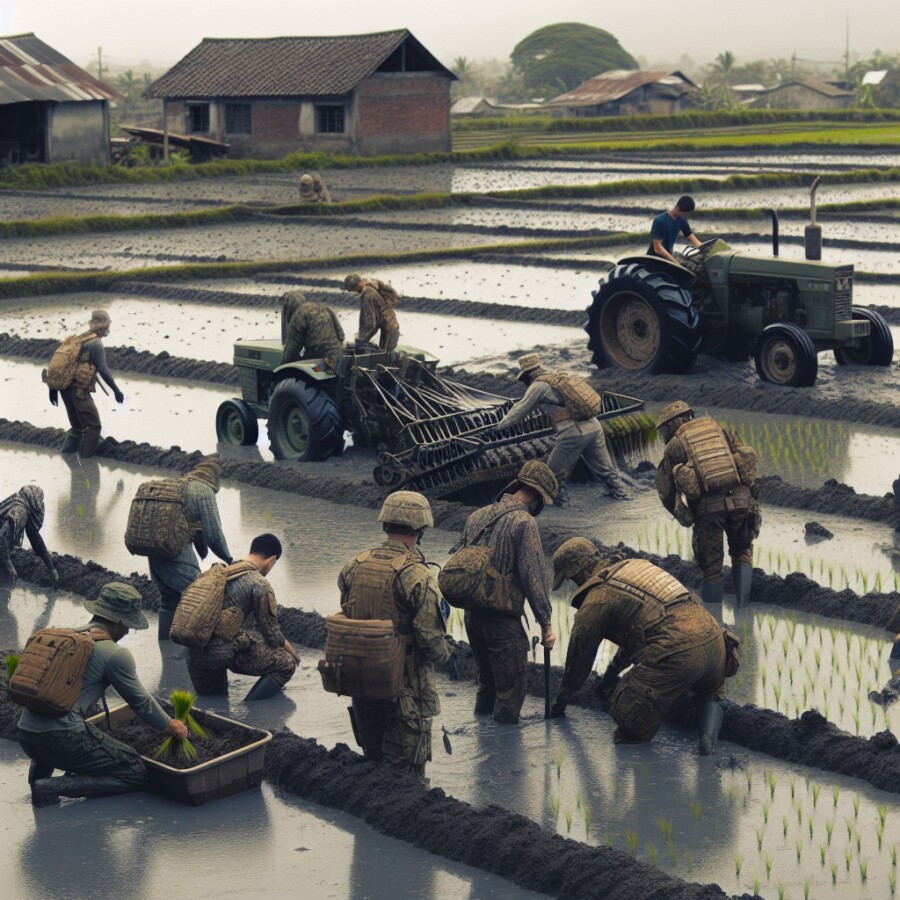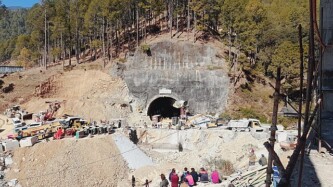Sustainable aviation fuels are becoming more popular as a way to lower the carbon footprint of the aviation industry. Scientists, like Ihab Ahmed from Sheffield University, are creating synthetic fuels from things like waste cooking oils and agricultural waste. These fuels don’t add to the carbon dioxide in the atmosphere, making them a greener choice compared to regular fossil fuels.
The aviation industry needs to find alternatives to jet fuel, especially with more planes expected to be flying in the next 20 years. While new planes are better at using fuel, the industry is looking into technologies such as hydrogen power and electrification for the long run. Sustainable aviation fuels, which can be made to act like regular jet fuels, offer a quicker solution since they can be used in current planes.
Even though sustainable aviation fuels have benefits, there are challenges in making enough to meet the industry’s needs. Right now, there isn’t a lot of these fuels available, and they cost more than regular jet fuel. Governments are making rules to increase the use of sustainable fuels, but production needs to go up a lot to make them cheaper and easier to get.
Scientists are trying different ways, like turning biomass into fuel and using power-to-liquid processes, to make sustainable aviation fuels. But there are worries about how these methods affect the environment and if they can be scaled up. While the aviation industry wants to make more of these fuels and lower costs, some people question if they really help cut down on carbon emissions from flying.
Original news source: Will sustainable aviation fuels take off? (BBC)
🎧 Listen:
Slow
Normal
Fast
📖 Vocabulary:
| 1 | aviation | The operation of aircraft |
| 2 | synthetic | Made by chemical synthesis, especially to imitate a natural product |
| 3 | atmosphere | The layer of gases surrounding the Earth |
| 4 | alternatives | Different options or choices |
| 5 | electrification | The process of powering something with electricity |
| 6 | solution | An answer to a problem |
| 7 | challenges | Difficulties or obstacles |
| 8 | production | The act of making or manufacturing something |
| 9 | biomass | Organic material used as fuel |
| 10 | processes | A series of actions or steps taken to achieve a particular end |
| 11 | scaled | Increased in size or number |
| 12 | emissions | Gases released into the air, especially by cars and factories |
| 13 | hydrogen | A colorless, odorless gas that can be used as fuel |
| 14 | technologies | The application of scientific knowledge for practical purposes |
| 15 | carbon | A chemical element found in all living things, often discussed in relation to climate change |
Group or Classroom Activities
Warm-up Activities:
– Headline Creation
Instructions: In small groups, have students create a catchy headline summarizing the main idea of the article about sustainable aviation fuels. Encourage them to be creative and concise.
– Opinion Spectrum
Instructions: Divide the class into two groups: one group in favor of sustainable aviation fuels and the other against. Have students stand on a spectrum line based on their level of agreement with the use of these fuels. Then, ask students from each group to explain their opinions.
– Word Association
Instructions: Write the word “aviation” on the board and have students call out any words that come to mind related to the topic of sustainable aviation fuels. Encourage them to think of as many words as possible within a time limit.
– Pros and Cons
Instructions: In pairs, have students list the pros and cons of using sustainable aviation fuels based on the information in the article. After a few minutes, have pairs share their lists with the class and facilitate a discussion on the advantages and disadvantages.
– Future Predictions
Instructions: Ask students to work individually and write down their predictions about the future of sustainable aviation fuels. They can include aspects like availability, affordability, and impact on the environment. After a few minutes, have students share their predictions with a partner and discuss similarities and differences.
🤔 Comprehension Questions:
1. What are sustainable aviation fuels made from?
2. Why is it important for the aviation industry to find alternatives to jet fuel?
3. What are some technologies the industry is looking into for the long run besides sustainable aviation fuels?
4. What challenges are there in making enough sustainable aviation fuels to meet the industry’s needs?
5. What are some methods scientists are trying to make sustainable aviation fuels?
6. Why are some people questioning if sustainable aviation fuels really help cut down on carbon emissions?
7. How do sustainable aviation fuels compare to regular jet fuels in terms of cost?
8. What are governments doing to increase the use of sustainable aviation fuels?
Go to answers ⇩
🎧✍️ Listen and Fill in the Gaps:
Sustainable aviation (1)______ are becoming more popular as a way to lower the carbon footprint of the aviation industry. Scientists, like Ihab Ahmed from Sheffield University, are creating synthetic fuels from (2)______ like waste cooking oils and agricultural waste. These fuels don’t add to the carbon dioxide in the (3)______, making them a greener (4)______ compared to regular fossil fuels.
The aviation industry needs to find alternatives to jet fuel, especially with more (5)______ (6)______ to be flying in the next 20 years. While new planes are (7)______ at using fuel, the industry is (8)______ into technologies such as hydrogen power and electrification for the long run. Sustainable aviation fuels, which can be made to act like regular jet fuels, offer a quicker solution since they can be used in current planes.
Even though sustainable aviation fuels have benefits, there are challenges in (9)______ enough to meet the industry’s needs. Right now, there isn’t a lot of these fuels (10)______, and they cost more than regular jet fuel. Governments are making (11)______ to increase the use of sustainable fuels, but production needs to go up a lot to make them cheaper and (12)______ to get.
Scientists are trying different ways, like turning biomass into fuel and (13)______ power-to-liquid (14)______, to make sustainable aviation fuels. But there are worries about how these methods affect the environment and if they can be scaled up. While the aviation (15)______ wants to make more of these fuels and lower costs, some people question if they really help cut down on (16)______ emissions from flying.
Go to answers ⇩
💬 Discussion Questions:
Students can ask a partner these questions, or discuss them as a group.
1. What is a sustainable aviation fuel and why is it important?
2. How would you feel if all airplanes started using sustainable aviation fuels?
3. Do you think it’s necessary for the aviation industry to find alternatives to jet fuel? Why or why not?
4. Do you like the idea of using waste cooking oils and agricultural waste to create synthetic fuels for airplanes? Why or why not?
5. What are some benefits of using sustainable aviation fuels compared to regular fossil fuels?
6. How do you think the aviation industry can overcome the challenges of producing enough sustainable aviation fuels?
7. Why do you think governments are making rules to increase the use of sustainable aviation fuels?
8. What are some concerns about the environmental impact of turning biomass into fuel for airplanes?
9. How do you think the aviation industry can make sustainable aviation fuels more affordable?
10. Do you believe that sustainable aviation fuels can truly help reduce carbon emissions from flying? Why or why not?
11. How do you think the production of sustainable aviation fuels can be scaled up to meet the industry’s needs?
12. What are some potential drawbacks of using hydrogen power and electrification as alternatives to jet fuel?
13. Why do you think some people question the effectiveness of sustainable aviation fuels in lowering carbon emissions?
14. How important do you think it is for the aviation industry to invest in sustainable practices?
15. If you were in charge of the aviation industry, what steps would you take to promote the use of sustainable aviation fuels?
Individual Activities
📖💭 Vocabulary Meanings:
Match each word to its meaning.
Words:
1. aviation
2. synthetic
3. atmosphere
4. alternatives
5. electrification
6. solution
7. challenges
8. production
9. biomass
10. processes
11. scaled
12. emissions
13. hydrogen
14. technologies
15. carbon
Meanings:
(A) The operation of aircraft
(B) Gases released into the air, especially by cars and factories
(C) The process of powering something with electricity
(D) The act of making or manufacturing something
(E) Increased in size or number
(F) An answer to a problem
(G) A colorless, odorless gas that can be used as fuel
(H) Difficulties or obstacles
(I) Made by chemical synthesis, especially to imitate a natural product
(J) A chemical element found in all living things, often discussed in relation to climate change
(K) The application of scientific knowledge for practical purposes
(L) A series of actions or steps taken to achieve a particular end
(M) The layer of gases surrounding the Earth
(N) Organic material used as fuel
(O) Different options or choices
Go to answers ⇩
🔡 Multiple Choice Questions:
1. What are sustainable aviation fuels made from?
(a) Coal and natural gas
(b) Crude oil
(c) Plastic bottles
(d) Waste cooking oils and agricultural waste
2. Why are sustainable aviation fuels considered a greener choice?
(a) They are cheaper than regular jet fuel
(b) They don’t add to the carbon dioxide in the atmosphere
(c) They are easier to produce
(d) They have a longer shelf life
3. Why does the aviation industry need to find alternatives to jet fuel?
(a) Jet fuel is becoming cheaper
(b) Jet fuel is better for the environment
(c) New planes don’t need fuel
(d) More planes are expected to be flying in the next 20 years
4. What technologies is the aviation industry looking into for the long run?
(a) Solar power and wind energy
(b) Nuclear power and coal
(c) Hydrogen power and electrification
(d) Biofuels and geothermal energy
5. What is one challenge in making enough sustainable aviation fuels?
(a) They are cheaper than regular jet fuel
(b) They are easier to get
(c) There isn’t a lot of these fuels available
(d) They don’t work well in current planes
6. What are scientists trying to do to make sustainable aviation fuels?
(a) Turning biomass into fuel and using power-to-liquid processes
(b) Extracting oil from the ground
(c) Burning fossil fuels
(d) Dumping waste into the ocean
7. Why are some people questioning the effectiveness of sustainable aviation fuels?
(a) They are unsure if they really help cut down on carbon emissions from flying
(b) They are too expensive
(c) They are hard to produce
(d) They are not safe to use in planes
8. What is one concern about the methods used to create sustainable aviation fuels?
(a) How they taste
(b) How they affect the environment and if they can be scaled up
(c) How long they last in storage
(d) How they look in the fuel tanks
Go to answers ⇩
🕵️ True or False Questions:
1. Sustainable aviation fuels can not be used in current planes, providing a slower solution compared to developing new aircraft technologies.
2. Despite the drawbacks of sustainable aviation fuels, there are challenges in producing enough to meet industry demands and in reducing their cost.
3. The aviation industry is exploring alternatives to jet fuel, such as hydrogen power and electrification, to address the expected increase in air travel over the next two decades.
4. Scientists are creating sustainable aviation fuels from waste cooking oils and agricultural waste to reduce the aviation industry’s carbon footprint.
5. Scientists are experimenting with different methods, like converting biomass into fuel and using power-to-liquid processes, to create sustainable aviation fuels.
6. These synthetic fuels do not contribute to carbon dioxide in the atmosphere, making them a greener option than regular fossil fuels.
7. Governments are relaxing regulations to promote the use of sustainable fuels, but production levels need to rise significantly to make them more affordable and accessible.
8. While the aviation industry aims to decrease the production of these fuels and raise costs, there are concerns about their environmental impact and effectiveness in reducing carbon emissions from flying.
Go to answers ⇩
📝 Write a Summary:
Write a summary of this news article in two sentences.
Check your writing now with the best free AI for English writing!
Writing Questions:
Answer the following questions. Write as much as you can for each answer.
Check your answers with our free English writing assistant!
1. What are sustainable aviation fuels made from, according to scientists like Ihab Ahmed?
2. Why does the aviation industry need to find alternatives to jet fuel?
3. What are some technologies the aviation industry is looking into for the long run?
4. What challenges are there in making enough sustainable aviation fuels to meet the industry’s needs?
5. What are some concerns about the methods used to create sustainable aviation fuels mentioned in the article?
✅ Answers
🤔✅ Comprehension Question Answers:
1. What are sustainable aviation fuels made from?
Sustainable aviation fuels are made from things like waste cooking oils and agricultural waste.
2. Why is it important for the aviation industry to find alternatives to jet fuel?
It is important for the aviation industry to find alternatives to jet fuel to lower the carbon footprint of the industry, especially with more planes expected to be flying in the future.
3. What are some technologies the industry is looking into for the long run besides sustainable aviation fuels?
Besides sustainable aviation fuels, the industry is looking into technologies such as hydrogen power and electrification for the long run.
4. What challenges are there in making enough sustainable aviation fuels to meet the industry’s needs?
Challenges in making enough sustainable aviation fuels include limited availability and higher costs compared to regular jet fuel.
5. What are some methods scientists are trying to make sustainable aviation fuels?
Scientists are trying methods like turning biomass into fuel and using power-to-liquid processes to make sustainable aviation fuels.
6. Why are some people questioning if sustainable aviation fuels really help cut down on carbon emissions?
Some people question if sustainable aviation fuels truly help cut down on carbon emissions because of concerns about the environmental impact of the production methods.
7. How do sustainable aviation fuels compare to regular jet fuels in terms of cost?
Sustainable aviation fuels currently cost more than regular jet fuels.
8. What are governments doing to increase the use of sustainable aviation fuels?
Governments are making rules to increase the use of sustainable aviation fuels in order to encourage their production and adoption in the aviation industry.
Go back to questions ⇧
🎧✍️✅ Listen and Fill in the Gaps Answers:
(1) fuels
(2) things
(3) atmosphere
(4) choice
(5) planes
(6) expected
(7) better
(8) looking
(9) making
(10) available
(11) rules
(12) easier
(13) using
(14) processes
(15) industry
(16) carbon
Go back to questions ⇧
📖💭✅ Vocabulary Meanings Answers:
1. aviation
Answer: (A) The operation of aircraft
2. synthetic
Answer: (I) Made by chemical synthesis, especially to imitate a natural product
3. atmosphere
Answer: (M) The layer of gases surrounding the Earth
4. alternatives
Answer: (O) Different options or choices
5. electrification
Answer: (C) The process of powering something with electricity
6. solution
Answer: (F) An answer to a problem
7. challenges
Answer: (H) Difficulties or obstacles
8. production
Answer: (D) The act of making or manufacturing something
9. biomass
Answer: (N) Organic material used as fuel
10. processes
Answer: (L) A series of actions or steps taken to achieve a particular end
11. scaled
Answer: (E) Increased in size or number
12. emissions
Answer: (B) Gases released into the air, especially by cars and factories
13. hydrogen
Answer: (G) A colorless, odorless gas that can be used as fuel
14. technologies
Answer: (K) The application of scientific knowledge for practical purposes
15. carbon
Answer: (J) A chemical element found in all living things, often discussed in relation to climate change
Go back to questions ⇧
🔡✅ Multiple Choice Answers:
1. What are sustainable aviation fuels made from?
Answer: (d) Waste cooking oils and agricultural waste
2. Why are sustainable aviation fuels considered a greener choice?
Answer: (b) They don’t add to the carbon dioxide in the atmosphere
3. Why does the aviation industry need to find alternatives to jet fuel?
Answer: (d) More planes are expected to be flying in the next 20 years
4. What technologies is the aviation industry looking into for the long run?
Answer: (c) Hydrogen power and electrification
5. What is one challenge in making enough sustainable aviation fuels?
Answer: (c) There isn’t a lot of these fuels available
6. What are scientists trying to do to make sustainable aviation fuels?
Answer: (a) Turning biomass into fuel and using power-to-liquid processes
7. Why are some people questioning the effectiveness of sustainable aviation fuels?
Answer: (a) They are unsure if they really help cut down on carbon emissions from flying
8. What is one concern about the methods used to create sustainable aviation fuels?
Answer: (b) How they affect the environment and if they can be scaled up
Go back to questions ⇧
🕵️✅ True or False Answers:
1. Sustainable aviation fuels can not be used in current planes, providing a slower solution compared to developing new aircraft technologies. (Answer: False)
2. Despite the drawbacks of sustainable aviation fuels, there are challenges in producing enough to meet industry demands and in reducing their cost. (Answer: False)
3. The aviation industry is exploring alternatives to jet fuel, such as hydrogen power and electrification, to address the expected increase in air travel over the next two decades. (Answer: True)
4. Scientists are creating sustainable aviation fuels from waste cooking oils and agricultural waste to reduce the aviation industry’s carbon footprint. (Answer: True)
5. Scientists are experimenting with different methods, like converting biomass into fuel and using power-to-liquid processes, to create sustainable aviation fuels. (Answer: True)
6. These synthetic fuels do not contribute to carbon dioxide in the atmosphere, making them a greener option than regular fossil fuels. (Answer: True)
7. Governments are relaxing regulations to promote the use of sustainable fuels, but production levels need to rise significantly to make them more affordable and accessible. (Answer: False)
8. While the aviation industry aims to decrease the production of these fuels and raise costs, there are concerns about their environmental impact and effectiveness in reducing carbon emissions from flying. (Answer: False)
Go back to questions ⇧



